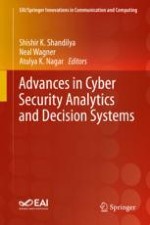2020 | OriginalPaper | Buchkapitel
Dynamic Recognition of Phishing URLs Using Deep Learning Techniques
verfasst von : S. Sountharrajan, M. Nivashini, Shishir K. Shandilya, E. Suganya, A. Bazila Banu, M. Karthiga
Erschienen in: Advances in Cyber Security Analytics and Decision Systems
Aktivieren Sie unsere intelligente Suche, um passende Fachinhalte oder Patente zu finden.
Wählen Sie Textabschnitte aus um mit Künstlicher Intelligenz passenden Patente zu finden. powered by
Markieren Sie Textabschnitte, um KI-gestützt weitere passende Inhalte zu finden. powered by
